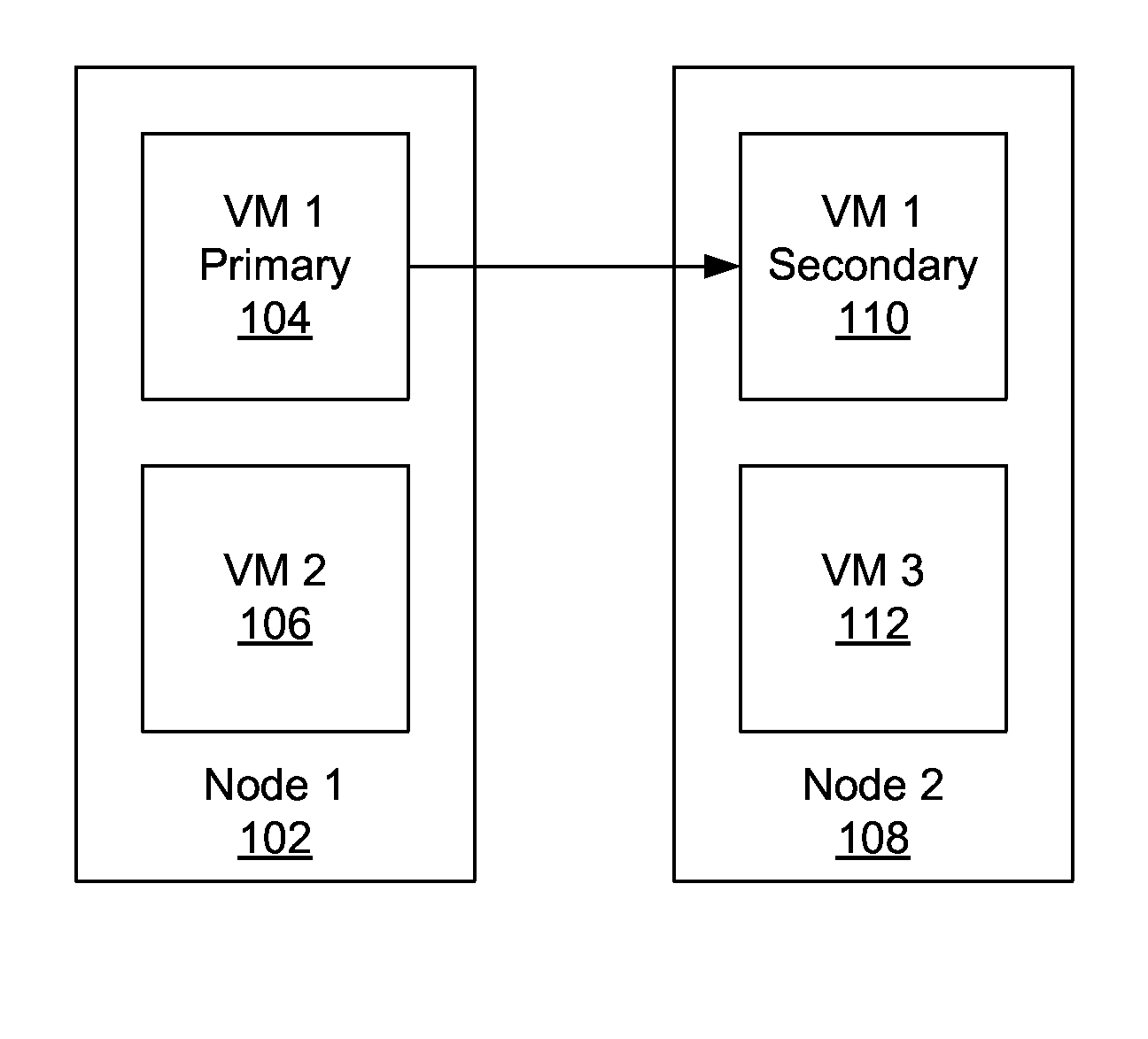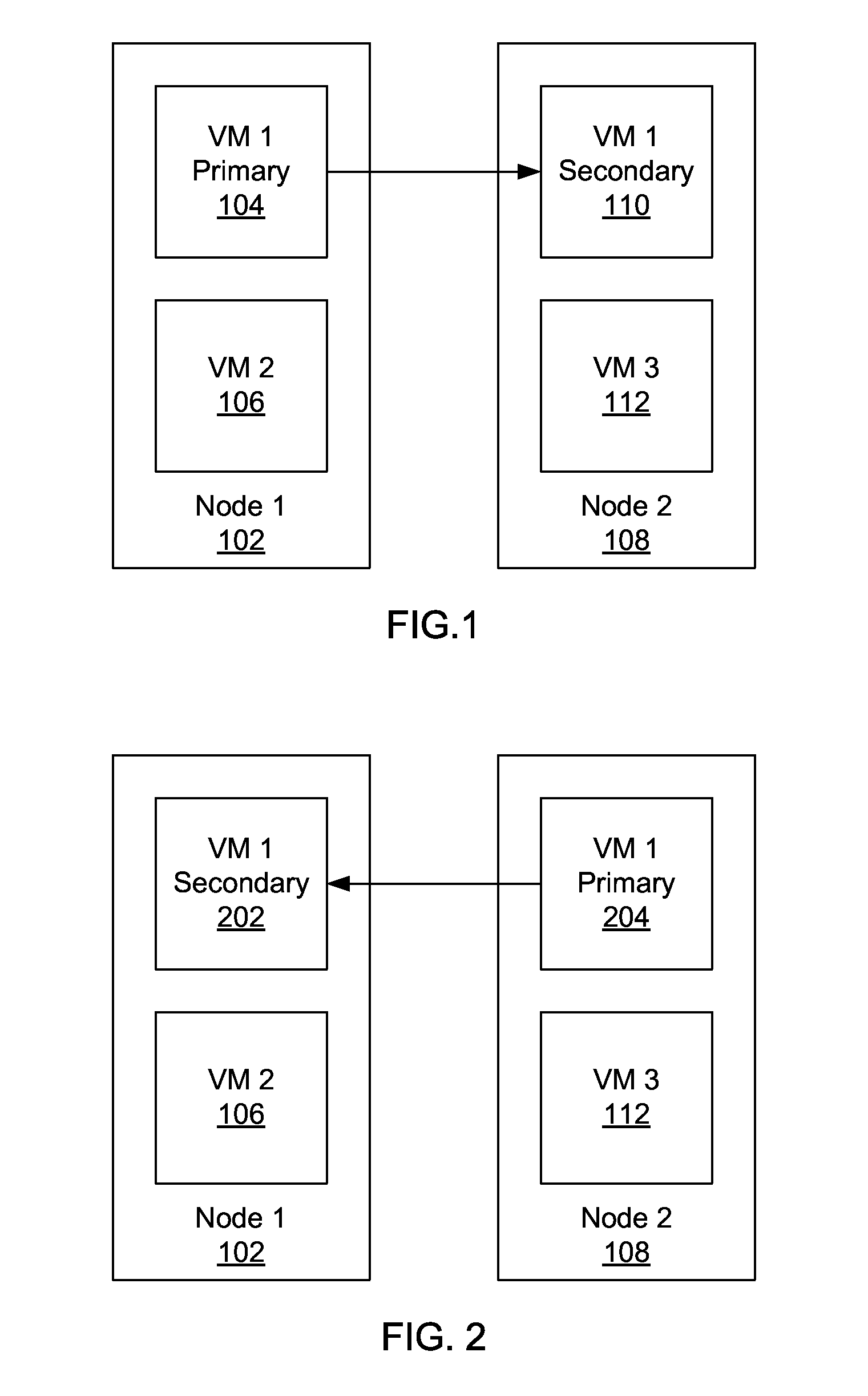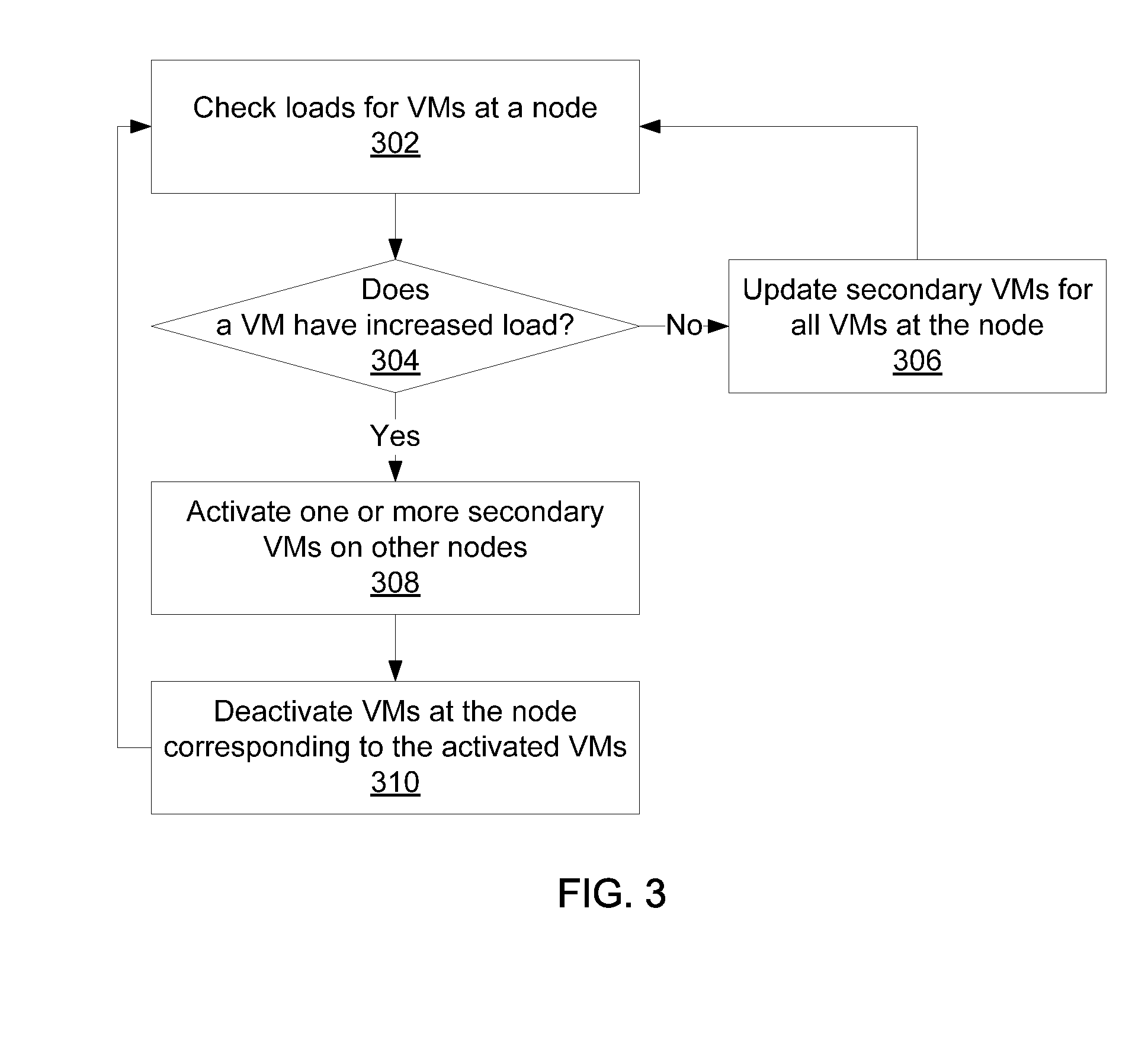Agile vm load balancing through micro-checkpointing and multi-architecture emulation
a vm load balancing and micro-checkpointing technology, applied in the field of system virtualization, can solve the problems of vm performance degradation, violation of the promise of slas, and inability to generally know the load variation of the application before it can be implemented, etc., to achieve free resources, increase load, and increase load
- Summary
- Abstract
- Description
- Claims
- Application Information
AI Technical Summary
Benefits of technology
Problems solved by technology
Method used
Image
Examples
Embodiment Construction
[0016]Embodiments of the present invention provide agile migration of virtual machines (VMs) to handle peak-load situations and do load-balancing by using adaptive micro checkpointing. In the present embodiments, certain VMs (referred to as primary VMs) that are consolidated on a single node have a corresponding inactive secondary VM that is replicated onto another node and that is periodically updated by the primary VM. The secondary VM stays in a passive mode until it is activated by a load balancer. The load balancer component monitors the loads on the respective VMs on a node and dynamically switches processing from a primary VM to a secondary VM based on the load currently seen on the nodes. To make these changes in an adaptive manner, the load balancer uses metrics that include, e.g., application metrics such as transactions per second and operating system metrics such as processor utilization.
[0017]Referring now to the drawings in which like numerals represent the same or sim...
PUM
 Login to View More
Login to View More Abstract
Description
Claims
Application Information
 Login to View More
Login to View More - R&D
- Intellectual Property
- Life Sciences
- Materials
- Tech Scout
- Unparalleled Data Quality
- Higher Quality Content
- 60% Fewer Hallucinations
Browse by: Latest US Patents, China's latest patents, Technical Efficacy Thesaurus, Application Domain, Technology Topic, Popular Technical Reports.
© 2025 PatSnap. All rights reserved.Legal|Privacy policy|Modern Slavery Act Transparency Statement|Sitemap|About US| Contact US: help@patsnap.com



